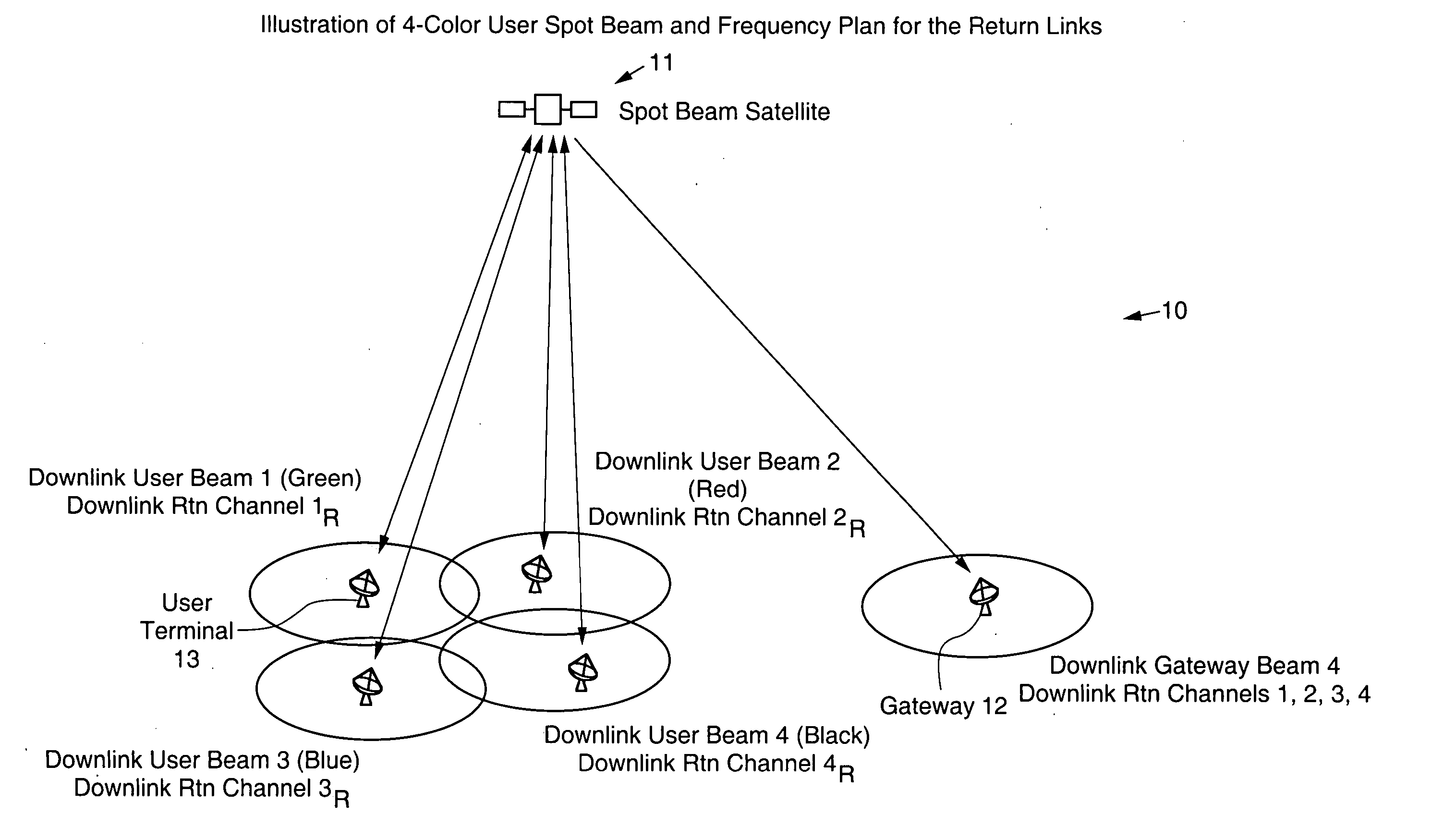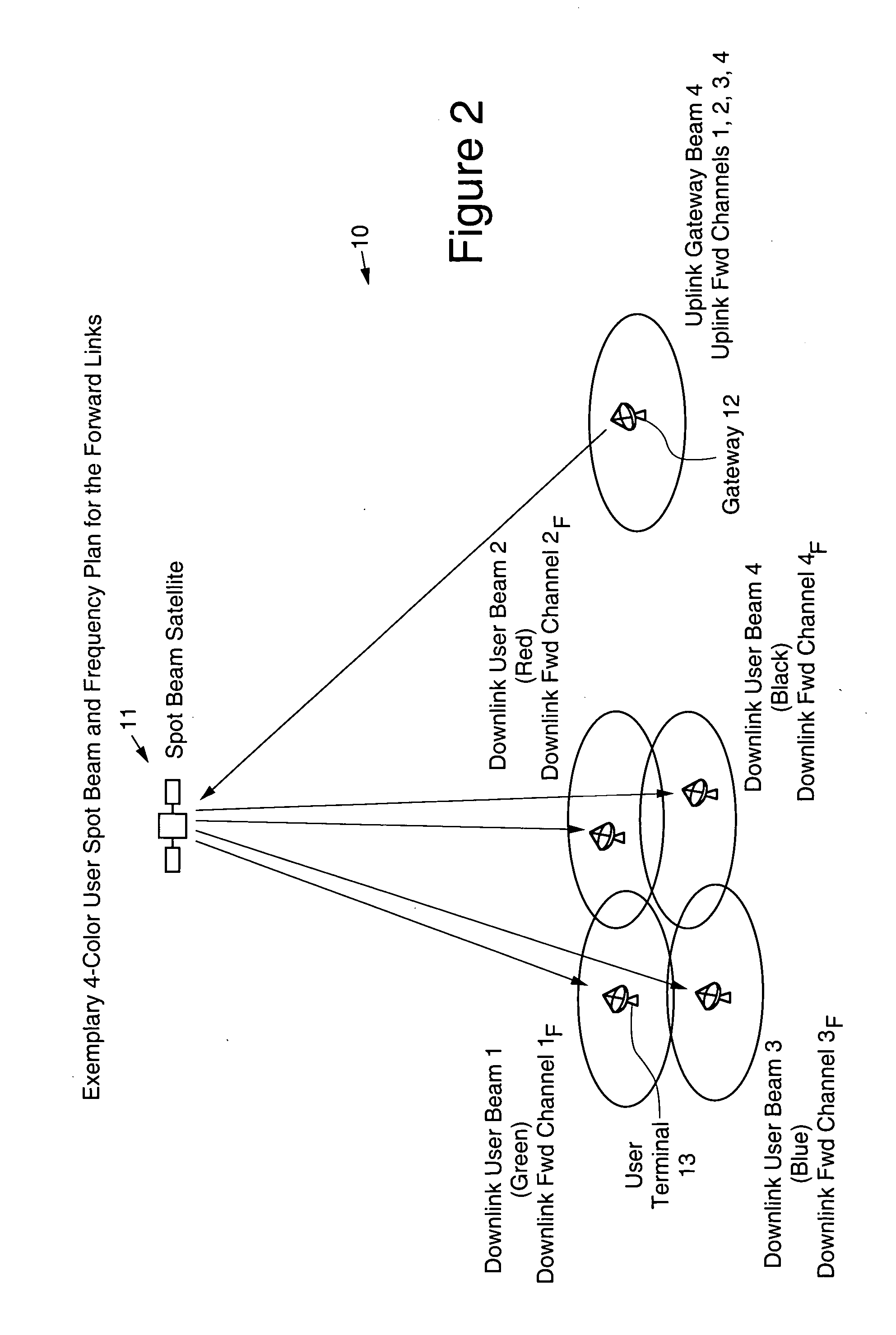Scalable multi-satellite spot beam architecture
a spot beam and multi-satellite technology, applied in the field of space segment portion of communications networks, can solve the problems of unacceptable time-consuming and expensive prospect of repointing 1 or 2 million user antennas to this backup satellite, higher cost, power and weight of connectivity satellites in general, and significant, perhaps unacceptable financial risks for these types of systems
- Summary
- Abstract
- Description
- Claims
- Application Information
AI Technical Summary
Benefits of technology
Problems solved by technology
Method used
Image
Examples
Embodiment Construction
[0027] Referring to the drawings, FIG. 1 depicts an example of a multi-satellite 11 spot beam implementation of an architecture of a scalable geostationary satellite system 10 in accordance with the present invention. As is shown in FIG. 1, there are 4 active and 2 spare satellites 11 and either of the two spare satellites 11 can be interchanged with any of the active satellites 11.
[0028]FIGS. 2 and 3 illustrate some of the general communications principles for a network, employing an access satellite 11. The forward link, also referred to as the forward channel, is used for communications FROM the gateways 12 TO the user terminals 13. In the forward communications channel, the gateway 12 would transmit to the satellite 11, via an uplink gateway beam, using the uplink frequencies allocated to the forward link, and the communications signals would be transmitted from the satellite 11 to the user terminals 13 in a downlink user beam, using the downlink frequencies allocated to the fo...
PUM
 Login to View More
Login to View More Abstract
Description
Claims
Application Information
 Login to View More
Login to View More - R&D
- Intellectual Property
- Life Sciences
- Materials
- Tech Scout
- Unparalleled Data Quality
- Higher Quality Content
- 60% Fewer Hallucinations
Browse by: Latest US Patents, China's latest patents, Technical Efficacy Thesaurus, Application Domain, Technology Topic, Popular Technical Reports.
© 2025 PatSnap. All rights reserved.Legal|Privacy policy|Modern Slavery Act Transparency Statement|Sitemap|About US| Contact US: help@patsnap.com



